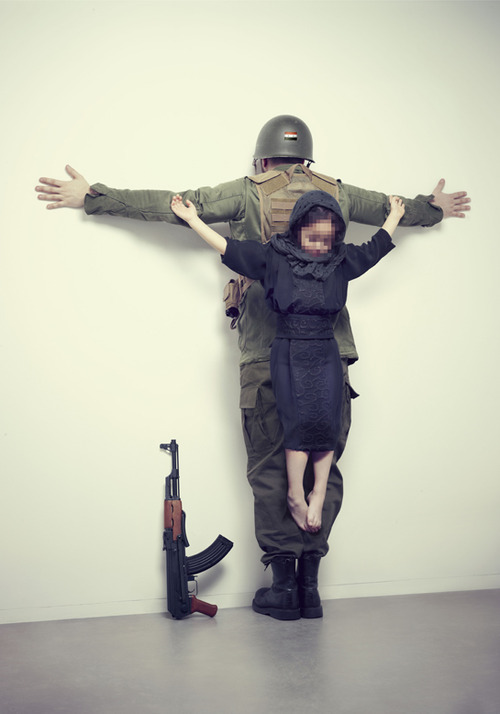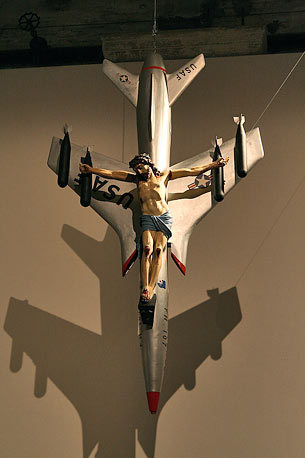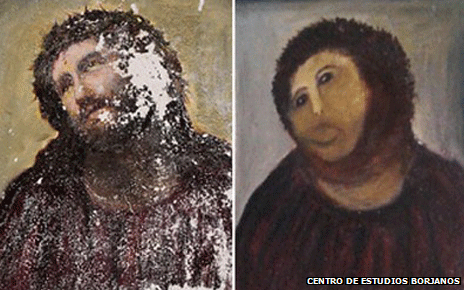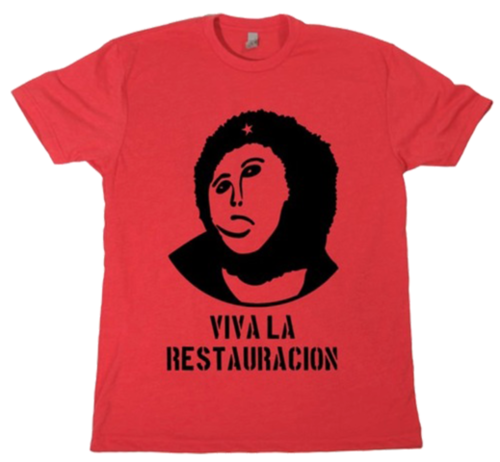Scared of art?

Siria by Erik Ravelo
I love art. I always did. At home, my house is decorated with a lot of art exhibition posters. Sometimes, when people are over to visit, they ask, how my Christian faith and some provocative art pieces fit together.
To me, it is no contradiction and no blasphemy. It keeps my mind and cultural sensors active and sharp. (I reflected on the link between art and consumerism for example earlier like here and here.)
Reading “Visual faith – art, theology and worship in dialogue” by William A. Dyrness this week, I realized that in general provocative kinds of art inspire and nurture my faith and keeps is “real”. Dyrness explores the world of imagery in Christian worship, including an historical survey of artistic expression of Christian faith throughout the existence of the church. His book deals with the relationship of church and visual arts starting with the pre-reformation history and the use of the image, moving on through the modern period and concluding with the possibilities and challenges open to Christian artists for the future. Especially his analysis of the present time for visual art and church is enlightening in many ways. Dyrness states that we live in a visually oriented world. He advocates for a re-entry of art into mainstream worship. To him it is a loss of contemporary worship, that art is often neglected, if not completely ignored.
But to me it is not only Dyrness’ support for a development of visual art in worship, to me, the real strength of the book is in the theory behind. The logic, how Dyrness structured the book illustrates the underlying conflicts and I would even go further than Dyrness does.
Dyrness states that the art hostility and rejection can be traced back to the theology of the reformation. His thesis is, that the protestant yearning for plain and clear theology, which dismisses any forms of visual arts for the sake of the power of the word is still noticeable today. For Dyrness this is the main reason for neglecting art in evangelical churches.
As a Lutheran pastor, in love with the word and assured of its power, I would think this is a reason, but not the main reason.

La civilización occidental y cristiana by Léon Ferrari
1. provocation
“Art, at its best, is an expression for agency and advocacy; it is meant to provoke and not only to please.” (p. 124).
There are forms of art, that have a high impact on the church – but in most cases in a negative way: Especially in fundamental evangelical circles some kinds of art offend Christians. This is not primarily rooted in an iconoclastic reformed theology, but in a culture critical theology in general. Artists reflecting current questions in society and religion in forms like shock-art are mistaken as blasphemers and unreflected agitators. Some Christian churches never take into consideration that this might be a serious way of expressing a vibrant and creative faith. Dismissing, rejecting and censoring this kind of creative adaption is a negative arrogance that fuels an art-phobic attitude in our churches.
“The question posed by these exhibits, therefore, is whether anything today can still shock is. The implied answer is yes, for the answer were no, the artists would not have made the effort. But where can we go to find a basis for our moral outrage? Christians respond that only faith in a holy God can properly ground such outrage. In a sense, these artists are presenting a contemporary morality play, but they are asking for someone to provide the moral of the story. The question is whether Christian are prepared to engage with this challenge.” (p. 127).
2. Beauty
Apart from the rejection of brave and provocative art, the linear and one-dimensional worship style might also be a problem for the way, we value creative virtuosity. It is not a question whether art is replacing the sermon. It is more the question how we include other creative forms of devotion and worship in our churches. Dyrness meets the traditional Protestant prejudice against visual arts and aesthetics with a positive invitation to have a new vision for the arts and a recovery of visual imagination. New and artistic spiritual elements might renew our understanding of worship. Most of the times it might not even be as provocative as we think, but simply a new way to express the reality of faith. These new holistic worship patterns could that embrace contemporary art but also traditional forms like icons. This new reflection of art would not only enrich our personal devotion but would also penetrate and engage contemporary culture.
It seems that contemporary worship in our churches lacks in both two perspectives. Our openness to appreciate provocative art with other reactions than censorship and rejection and on the other hand the courage to accept new ways of creative worship in our churches. I would love, if this traditional picture, its restoration process and creative adaption would be a foretaste for a new attitude towards art.


- Are we prepared and willing to engage a fruitful confrontation with shock-art?
- Which new forms of devotion and worship using (visual) art can you imagine? Which ones would you appreciate?
Leave a Reply
You must be logged in to post a comment.